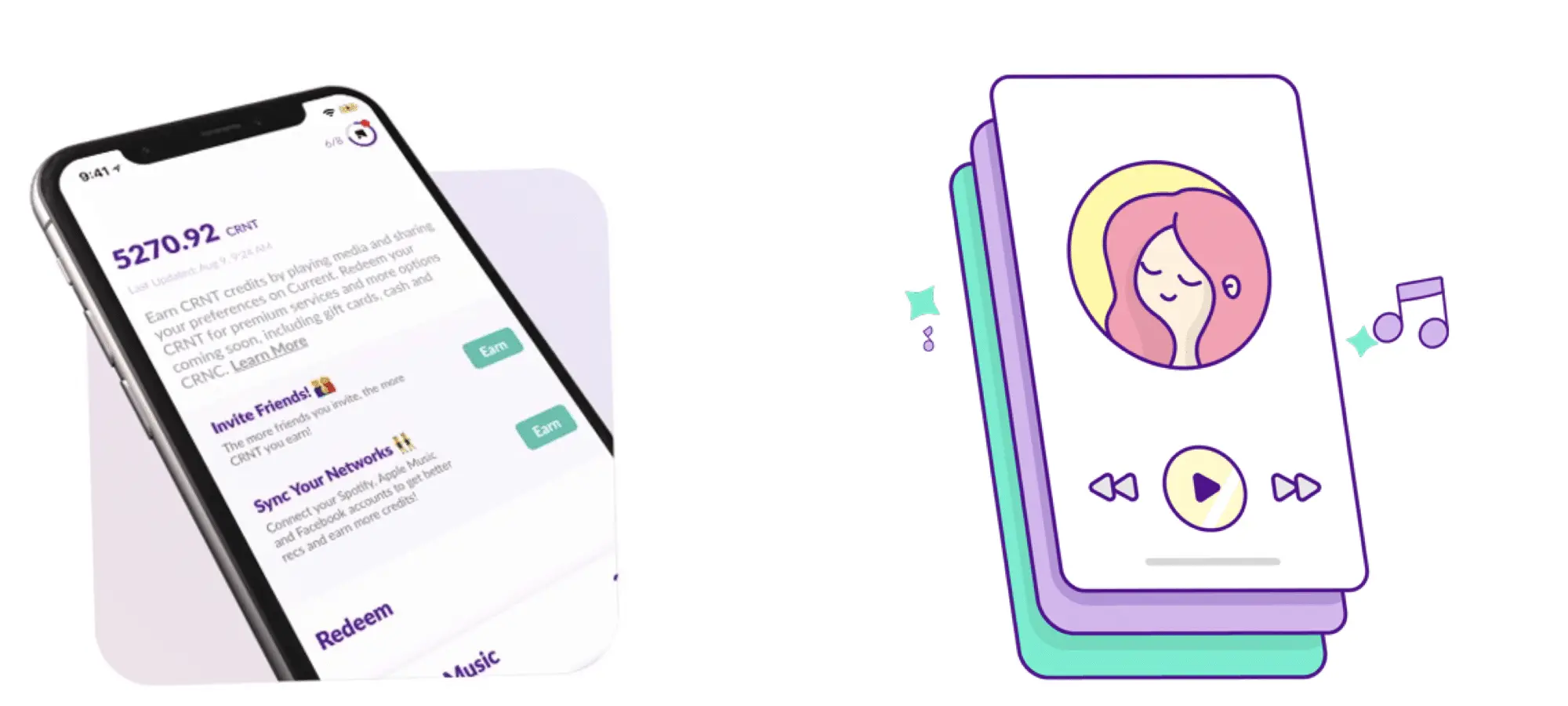
Writing Tips
A Step by Step Guide to Publishing Your Book
At one point or another, many of us have dreamed about becoming a published author. There are many reasons why people want to publish their works, ranging from the desire to relate to an audience, share their knowledge and skills with others, or perhaps even make a little bit of money. No matter your reason for wanting to publish, achieving that dream may not be as far fetched as you might think.
Two summers ago I authored a book titled The E-Ticket Life: Stories, Essays, and Lessons Learned from My Decidedly Disney Travels all about my trips to various Disney theme parks around the world. Clearly the market for such a book was a little too limited for the likes of Random House and so, after trying a few smaller publishers, I wound up partnering with a Disney fan site called LaughingPlace to self-publish the title. As part of this process I learned a lot about the how publishing works including submitting a proposal, what goes into laying out a book, and how you go about the promoting the title once it’s done.
If you’ve ever thought about writing and publishing your own book but don’t know where to start, here’s is a complete guide to helping you bring your idea into print.
Finding a Publisher
For some people the idea of self-publishing involves too much risk and, quite honestly, not enough prestige. Unfortunately the odds of a publisher approaching you for the rights to your book are slim to none if you don’t have a literary agent in your corner — and obtaining one of those is a process in and of itself. That being said there are still publishers that accept unsolicited submissions and could prove to be a great partner for you and your work. Here’s what you should do if you really want to get your book published by someone else:
Search online
There are a couple of ways to go about looking for a publisher and both of them start online. One plan of attack is to look at books that have similar markets to yours and see who published them. Typically you can find their website and poke around to see if you can find any contact information or, even better, a link that says “Author Guildlines.” Be prepared to come across a few “We do not accept unsolicited materials” notes in your search but don’t give up!
Another way to go about your search is to specifically look for publishers who will accept submissions. This can be achieved through Google queries where you’re sure to come across lists of publishers like this onethat can give you a jumping off point. In some cases you may find that the information is outdated or the publisher is no longer seeking new authors but, trust me, there are still plenty that do.
Pay attention to what they want
The fastest way to a rejection is to ignore a publisher’s request. Often times those that accept submissions are very focused on a certain genre or style of book. If your book doesn’t fit that description, don’t waste their time by submitting.
Additionally some publishers will be very specific about what they’d like to receive from authors. This could range from a simple query letter or informal e-mail to a full-on book proposal (which we’ll cover in a moment). If you jump the gun and send a book proposal when they only wanted an e-mail, chances are you’ll have not only wasted your time but also erased any interest the publisher may have had in your project.
How to Write a Book Proposal (Non-Fiction)
Even if it’s not the first step in your correspondence, it’s very likely that a publisher will want to see a formal book proposal before officially greenlighting your non-fiction book. In fact preparing a proposal before you even search for publishers can helpful in that it will get you to flesh out your idea, research the market you’re looking to enter, and distill your perfect pitch to pass onto publishers. Plus, with the heavy lifting done, you’ll only have to make some small tweaks for tailoring as publishers do ask to see your full proposal.
Once again it’s important to pay attention to exactly what publishers want in your proposal, but it will typically include several sections of information about the book as well as a sample chapter. In addition to an overview of your project including an estimated length you’ll likely also want to include demographic research about who you think your target market will be, a list of titles your book will compete with as well as some that it will compliment (hint: the complimenting titles section should include books published by the company you’re applying to), chapter outlines and descriptions, and a sample of your manuscript — usually the first chapter or two.
For more in-depth info about preparing your proposal, I highly recommend the aptly titled book How to Write a Book Proposal by Michael Larsen. This easy read will tell you everything you need to know about the process as well as how to make your proposal look as professional and polished as possible. In fact, even when publishers passed on my book idea, many still complimented the proposal I learned to craft from reading Larsen’s work, so that’s a pretty good endorsement I suppose.
Keep trying
A word of warning: there’s a very good chance that one or several publishers will reject your idea. It’s nothing personal — not every idea is right for every publisher. If you’re really dead set on finding a publisher for your book, you’ll have to press on anyway.
Also be warned that some publishers simply don’t have the time to respond to all submissions. In an odd way you may find that getting a rejection letter is actually better than getting no letter at all. At the very least publishers should tell you how long their typical review window is so you’ll know when it’s time to move on to the next one. Unfortunately that is not the case with all publishers so expect some long silent rejections as well.
How to Self-Publish a Book
Whether you’ve exhausted your options for traditional publishing or that was never a goal of yours to begin with, self-publishing can be a great way to get your book into the hands of readers. Best of all the process has been made much easier over the years, allowing authors with all sorts of budgets to see their work in print. As result there are several different routes to take when looking to self-publish, so let’s jump in.
Consider still preparing a book proposal
In case you skipped over the “Seeking a publisher” section, I wanted to mention how helpful preparing a book proposal for your non-fiction title can be even if you have no intention of submitting to publishers. By going through the process and research associated with producing a proposal, you’ll help ensure that your idea is viable enough to fill an entire book and be better informed about the market you want to sell to. This information can be invaluable, especially since you alone will be responsible for marketing and selling your title. Even if you skip some of the sections that make up a full proposal, it can still be a great exercise that will make writing your manuscript that much easier.
Picking the Right Self-Publishing Service
As I mentioned there are now several different self-publishing services that not only print books but also offer editing, design, and cover art assistance as well. Because of this you may want to start researching different options even before your manuscript is complete. Choosing the right service will involve setting a budget for your project, assessing how much help you’ll need to turn your manuscript into an actual book, and what kind of distribution you’re hoping to get.
CreateSpace
One of the most well-known self-publishing options available today is CreateSpace. Part of their popularity is likely due to the fact that the platform is owned by Internet giant Amazon. Depending on your feelings of that particular company you may see that a positive or a negative, but the truth is that CreateSpace has plenty of options that will appeal to a wide variety of authors. Additionally, in the interest of full disclosure, they are the only service I have personal experience with and can talk about in-depth.
What I appreciate most about CreateSpace is that it makes it easy to calculate expenses and publish on a budget. In fact their website allows you to estimate how much your book will cost per copy after accounting for options such as book size, black and white or color printing, and using cream or white paper. Additionally you can peruse the other added services they provide such as interior design for your book and even cover art. However what excited me personally was that, by declining those extra services, I was able to create my book and buy copies for only the price of printing and shipping — about $6 for a single copy ($3 for the book and $3 for shipping).
With CreateSpace being owned by Amazon, they also make it very easy to list your title on Amazon and have orders fulfilled by the site. This allows you to collect a royalty for each sale, which you can also calculate on their site before even signing up. While I do make far more by selling books myself, I’d be lying if I said that letting Amazon do all the work while I sit back and get paid wasn’t pretty great.
Other services
CreateSpace may be the biggest option out there right now, but they’re far from the only one. In fact there are plenty of full-service self-publishing companies out there that may work better for what you want and need. For example, I’ve had friends use Dog Ear Publishing, which offers a number of packages that include everything from copyediting to marketing assistance.
Of course you can also do it “the old-fashioned way” and contact a printing company to produce your book. This route may cost you more upfront but actually come out to less per book. You’ll also have more options for how the book looks, allowing you to completely customize your vision. Rates and services may very and so, if this route interests you, it’s best to do your own research on printing companies you can work with directly on your project.
Writing and Editing Your Book
Depending on your skill sets, writing your manuscript could either be the easiest or the hardest part of actually producing a book. If you don’t have much experience writing (or at least writing something of length) the prospect of completing a book may seem daunting at first. However, by setting goals for yourself to meet as well as getting outside input from others, you’ll be able to get your ideas onto the pages and have them ready for others to read.
Producing your manuscript
The best advice I can give any author is to find a way to break down your project into smaller, more manageable pieces. Very few people can sit down and crank out 300 pages but maybe you can produce 10 pages of rough material in a few hours. This is how you have to think in order to make it through a full manuscript.
Obviously there will be times when inspiration hits you harder than other times, but it may still be helpful to set page count/content goals for yourself. This will assist you in staying on track and on your way to completion. Also, as I eluded to, don’t stress yourself out over rough draft material — you’ll always have the chance to clean it up and bring your work up to your standards. In fact the beauty of self-publishing is that you can continue to make edits even after your work is out there!
The technical stuff
When potential authors approach me to ask about the process, one of their most common questions is what I used to write my manuscript. Personally I simply used Microsoft Word, double-spaced, in Times New Roman 12-sized font. However be advised that all of that will change as you move your manuscript into layout mode for publication, so really you use whatever word processor you wish.
A follow-up question is usually “how does Word page count compare to a book?” and, unfortunately, that’s hard to say due a great number of factors. If you want to get a somewhat better idea of how your manuscript will translate, consider adjusting your Word page layout to match the trim size you plan on using for your finished book. This still won’t give you a full idea of what your final page count will be but it will help give you a more accurate estimate.
Lastly, just like I recommend breaking your writing goals down into small pieces, I would also advise you to save your chapters as separate files. This will help prevent your word processor from lagging as your file grows larger and larger. Additionally doing so will come in handy if you end up laying out your book yourself.
Editing, copy editing, and more editing
Have you ever found a typo in a published book before? They do happen and they can be very distracting to readers (not to mention embarrassing for authors). But there’s more to editing a book than just catching typos — working with a great editor can help elevate your book and ensure that it’s something readers will enjoy.
There are several freelance editors you can hire to give you feedback and notes about your work. Some will look over your manuscript once while others will actually join you for the full process, giving their input along the way. Unfortunately this service doesn’t always come cheap and finding an editor that’s right for your project can often be a tall task. However, if you really want to make your book the best it can be and are open to constructive criticism, sites like
As for the typo catching, you may actually need an entirely different person for that (but not always — make sure you know what services your editor provides before hiring them). On the whole, “editors” look at the overall content of your book while “copyeditors” deal with the grammar and spelling in your manuscript. Many copyeditors freelance as well and boast a variety of rates. Once again you can find copyeditors on many of the sites above.
Ultimately getting at least a second pair of eyes on your work before sending it to print is a must. Even if you don’t end up springing for an editor you may want to solicit feedback from a friend or family member to ensure everything you say in your book is coming across the way you intended. Additionally, unless you have some very keen-eyed friends, hiring a copyeditor is worth the extra cost more often than not.
From Manuscript to Printed Book
Once every word in your manuscript is perfected it’s time to think about what else makes a book a book. This includes designing the interior, creating the cover, and preparing it for print. If you’re well versed in these departments you may be able to finish up the process by yourself. Otherwise this is where the production of your book could get a bit expensive.
Interior design
When you look at the inside of a book, you’ll notice it’s more than just words randomly strewn on a page. In fact you may have never actually realized how much blank space is on each page, allowing you to hold the book without covering up any text. Then there are images, headers and/or footers, and other stylistic additions that must be chosen carefully. All of these elements will make up the interior design of your book and will need to be considered.
There are several different people you could hire to help you layout your book, ranging from typesetters to formatters to designers. Meanwhile others might dabble in a bit of everything to complete your full interior. Either way you may decide to hire a freelancer or simply look into some of the added services provided by CreateSpace, Dog Ear, and others. However there is always the option to give it a shot yourself.
Admittedly laying out your own book is a large task and can be time-consuming. There is also a lot of room for error, which is why you can surely find plenty of articles on the Internet advising you not to even attempt it. However, as someone who designed his own book interior, I say give it a chance. Of course this isn’t to say that my interior is perfect by any means, but I was very pleased with what I was able to do considering how little I spent.
The first step if you want to design your own book interior is to download a program called InDesign. This Adobe program typically gives you a free seven-day trial to play around and see if you have what it takes to finish the job. From there a series of YouTube videos should help give you a basic idea of how the program works, allowing you to customize the look of your layout. Since you will likely need more time after your free week, Adobe also offers monthly subscriptions that will allow you to keep the full program for $30 a month (less if you pay for a full year).
Again I will warn you that this is an advanced program and may prove too difficult, especially if you’re not very tech savvy. However I do honestly think it’s worth at least trying. After all the first month is free and, if nothing else, perhaps you’ll be able to work up a sample to show whomever you do eventually hire what type of look you were going for.
Cover art and text
Just because they say not to judge a book by its cover doesn’t mean that everyone heeds that advice. In fact your cover art could either attract an interested buyer or show your lack of professionalism and cheapen your work in the eyes of a potential reader. That’s why it’s important to put a lot of thought into the how you describe your book both with the cover art and the back text.
Unless you are an artist or graphic designer, this is one step where you will definitely want to reach out for help. Whether you commission the art separately from the layout or ask the same person to do both, it’s well worth the money to create a cover that grabs people’s attention and gets them interested in your book. Additionally you’ll want to consider whether a glossy or matte finish will look best for the art on your book cover.
Lest we forget there are actually two covers to a book and the back is just as important as the front. Traditionally the back cover is where you can really hook readers by giving them a small preview of what your book has to offer. If you’re able to get great review quotes from well-known names you’ll want to find a way to work those onto your cover. However still be sure to tell readers what the book is actually aboutand not just that people like it.
Getting ready to print
You are now tantalizingly close to being ready to publish your book but there are still a few other things you’ll need to do. The first is obtaining an International Standard Book Number (ISBN). If you’re using a service like CreateSpace, this may already be included but you may need or wish to purchase your own. Note that you will need a separate ISBN for different versions of the book, meaning your hardcover edition and paperback will need different numbers, as will an e-book version. The leading service for buying bundles of ISBNs is Bowker, who sells 10 for $250.
If you plan on selling your book at retailers you’ll also want to create a barcode to affix to your back cover. This will include both your ISBN and your cover price so that information will come up when scanned. Digital barcodes can be ordered online from a number of sources and should be placed in the bottom right corner of your back cover.
Once you’re interior and exterior is ready to go, it’s best to save each file as a .pdf. In CreateSpace you’ll be able to upload both of those files and even see a digital preview of what your interior will look like. From there you can submit your book and order a proof!
Review your proof before doing a full run
The final step before sending your book to print is getting a proof copy that you can inspect for errors. This is especially important if you designed the interior yourself as common errors include making the gutter (the space in between the left and right page) too small or using a font that isn’t as pleasing in print as it was on a computer screen. Each service will vary but there should still be time to make the necessary adjustments and try again.
As I mentioned CreateSpace offers a digital proof you can see online. However I would still, without a doubt, recommend ordering a physical copy as well. While you are most likely very excited and want to hurry up and put the book into production, you will thoroughly regret that decision if you find an error after it’s too late to fix it.
Promoting Your Book
Regardless of whether you ended up working with a publisher or decided to put the book out yourself, it is still in your best interest to promote your work to the best of your ability. This includes spreading the word on social media, selling signed copies, and much more. Here are a few things to think about as your roll out your marketing plan:
Take advantage of social media and e-mail lists
Social media is one of the most powerful tools available to authors today. Even if you don’t already have a massive following, there are still ways to reach out to potential readers. For example consider doing a profile search for Twitter users who may be interested in your book and start following them and retweet and/or reply to their Tweets. You can also try targeting hashtags, inviting people to like your Facebook page, and experimenting with promoted posts and ads.
Another great way to reach people is to utilize an e-mail list. This process can actually start before your book is even done. One idea that can help promote sales is to offer readers a free sample chapter of your title when they sign up for you list. That way you can follow up with them when the book becomes available and down the road as you release even more content. Tools like GetResponse, Aweber, and Drip can help facilitate this process for free or for fairly cheap.
Run contests on social media and with media partners
Everyone loves free stuff so why not entice them with prizes while promoting your book at the same time? Working with various sites and influencers to give away copies of your book or just doing so yourself can help raise awareness for your title and make people excited about it. Pro-tip: iBooks even allows you to generate promo codes for free download copies so you can give something away without even needing to spend any money.
Of course you can give away copies on your own as well. This can be as simple as choosing a random person who retweeted your requested post by using simple tools like TweetDraw. Another route is to run a sweepstakes that requires entrants to fill out a form, which services like ViralSweep can help with. The bonus here is that you can help build that aforementioned e-mail list.
Aside from print media and websites you might also want to look for podcasts you can request to be a guest on. What’s great about podcasts is that they can maintain very niche fan bases, potentially giving you a very receptive audience. You give the podcasters content, they get to give something away to their listeners that didn’t cost them a cent, you get to promote you book, and everyone’s happy!
There are a couple of easy ways to find podcast candidates. On Google use their search operators plus your target audience keywords. For example if I where to look for personal finance podcasts I’d type in the Google search box:
intitle:podcast + “personal finance”
or
inurl:podcast + “personal finance”
As you can see you will find a number of podcasts on personal finance as well as articles on personal finance podcasts that might be good fits.
Another good way to find podcasts is to go directly to iTunes, choice podcasts from the dropdown menu and search for your area of interest. iTunes is the biggest podcast host so you will find many options to choose from. Just click on the links and checkout the show information to see if it is a good fit.
Lastly checkout Soundcloud and do search for people + your area of interest. For example https://soundcloud.com/search/people?q=personal%20finance
There aren’t as many results as you will find on iTunes but you will still find some good candidates.
Speaking of the media, getting reviews for your book can be a great way to spread the word. Of course there is always the chance of getting negative reviews but it’s still worth a shot. Plus, even if the reviewer didn’t care for your work, their write up of it might still pique another reader’s interest.
It is best to start sending out review copies before a book’s official release so starting compiling a list of people to reach out to now. Additionally you may want to grow your presence on Goodreads, a site which allows authors to engage with readers. Just be sure to fill out a full profile and interact with users beyond just plugging your book.
Additionally don’t forget to also ask readers who enjoyed your book to leave a review on Amazon. This is an easy way to help others find your title and decide to buy. It’s against Amazon’s rules to pay people for reviews but, if you ask really nicely, they’ll probably do it for free. ?
Selling signed books and arranging events
You’d be surprised how much more some readers will cherish a book if it is signed by the author — even if they had never heard of you before. That’s why offering a way for them to obtain signed copies of your book is a brilliant way to move merchandise. This can be accomplished by opening up an e-commerce section of your site or using platforms like Square you can use independently.
Signing up for Square will give you a sales page that you can customize with different options (for an example you can check out my store page). Other cool features include the ability to track inventory and use of Square’s card readers, which will definitely come in handy during in-person events. Although Square will charge you credit card processing fees on each transaction, the e-commerce site itself is actually free, making this a good place to start if you don’t already have a commerce-friendly site.
As far as promoting your signed copies, that’s where social media comes in. Often times I’ll still share my Amazon link but am sure to mention that signed copies are available exclusively through my online store. Furthermore I sell signed books for 20% less than the list price since the extra margin I earn still makes this a lucrative price point. Such a strategy makes buying from me even harder to resist, although the Amazon route is still available to anyone who wants it.
With all of this talk about self-publishing and Amazon, let’s not forget that there are still bookstores around as well. Perhaps an independent bookstore in your area would love to have you come do a book signing in their shop (provided that they buy the books at wholesale and make a profit on each copy, of course). Similarly be on the look out for expos and conventions that might be a good fit for your book’s intended audience. For example, given the Disney-centric nature of my book, LaughingPlace and I choose to get a booth at the 2015 D23 Expo — a biennial convention hosted by the official Disney fan club (in fact we already booked our booth for this year’s event as well). The one downside is that you’ll likely have to pay a fee to have a booth but it could prove to be a good investment if you know how to sell.
If you do get a table at an event I humbly recommend printing up flyers or bookmarks with info about your book. Not only will this save you a lot of talking but will also remind people to seek out your book later if they don’t end up purchasing on the spot. Personally I went one day without flyers and will never make that mistake again.
Hopefully this guide to publishing your own book didn’t leave you feeling overwhelmed. While there is certainly a lot of work that goes into book publishing (even if you do have an actual publisher), it can also be a very rewarding experience. Just remember to take it step by step and keep moving forward — all that hard work will pay off when you finally see the book you authored sitting on your shelf.








